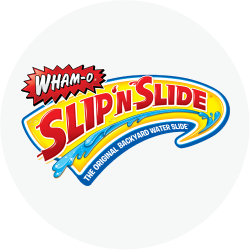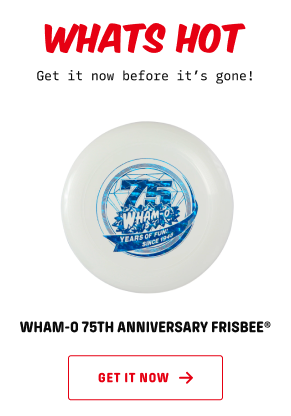List all the proprietary playthings that have sold for over fifty consecutive years and you’ll get a Who’s Who of classic toys. Whittle that list down to toys that have sold over 200 million copies and only a few elite playthings like Barbie, Monopoly, and Frisbee remain. These are toys that deserve time-capsule status. Toys that, if shot into space and discovered by some alien race, would help define our uniquely human experience. Human experience? Ask yourself which of those playthings is enjoyed by a different species on the planet Earth, and only Frisbee remains—loved by dogs, humans, and maybe even some creatures in a flying saucer somewhere.
From Pie Tins to Plastic Dreams


The Frisbee’s story doesn’t begin in a boardroom or a lab—it starts with a toss. In 1937, a young man named Fred Morrison flung a popcorn lid across the lawn to his girlfriend, Lucile Nay. It flew surprisingly well. They upgraded to metal cake pans, and during a casual beach day in Santa Monica, they sold one to a fellow sunbather for 25 cents. The pan had cost them just a nickel. A business was born.
After serving in World War II as a bomber pilot, Morrison returned with a vision: a purpose-built flying disc made from the revolutionary new material—plastic. In 1948, he and business partner Warren Franscioni launched the Flyin-Saucer, a plastic disc marketed amid America's growing fascination with UFOs.
Though it generated curiosity, the Flyin-Saucer had limitations—it was hard to throw consistently and struggled in the wind. Morrison eventually split with Franscioni, but he never let go of the idea.
The Pluto Platter Era

Above: In 1955, Fred Morri- son sold his Pluto Platter in a colorful bag with equally colorful copy. Note the not- so-safe suggestion to “Use bag for space helmet if head fits.”
In 1955, Morrison reimagined the disc from top to bottom. He added better shaping, more aerodynamic balance, and—leaning into the space-race zeitgeist—dubbed it the Pluto Platter. Planet names were molded around the outer rim, and instructions on the underside encouraged experimentation. “Flat flip flies straight. Tilted flip curves—experiment.”
The new disc wasn’t just a toy—it was a blank canvas for creative play. And people took to it immediately.
At the 1957 Los Angeles County Fair, WHAM-O founders Rich Knerr and Spud Melin spotted Morrison demonstrating the Pluto Platter. They saw the spark—and acquired the rights soon after. Under WHAM-O, the disc found mass-market magic.
Around the same time, East Coast college students were tossing around metal pie tins from the Frisbie Pie Company, shouting “Frisbie!” as a warning when someone was about to be hit. The name stuck. WHAM-O noticed the trend, adjusted the spelling, and by 1958, the Frisbee as we know it was launched.
Morrison wasn’t a fan of the new name—but millions of others were.
The Golden Age of Toss

Throughout the 1960s and ’70s, the Frisbee captured the imagination of a counterculture in motion. College campuses, summer camps, and city parks were full of flying discs. It became a staple of the laid-back, free-spirited outdoor lifestyle—no batteries, no screens, just flight.
WHAM-O, always ahead of its time in promotion, drove Frisbee mania with traveling demonstration teams, promotional events, and even instructional booklets authored by "Frisbee experts."
In 1964, the arrival of Ed “Steady Ed” Headrick marked a turning point. He reengineered the disc for true performance—adding flight rings and stabilizing the rim. His Professional Model transformed Frisbee into a genuine sport. From there, a whole universe of disc-based games exploded:
-
Guts: Two teams, one disc, and the challenge to catch it barehanded at blistering speeds.
-
Ultimate: Developed by high school students in New Jersey in 1968, this fast-paced team game combined football, soccer, and basketball elements—without referees.
-
Disc Golf: Using trees, trash cans, and eventually WHAM-O-designed targets, disc golf evolved into a global sport with professional tournaments.
-
Freestyle: A swirling mix of dance, gymnastics, and trick catching—helped by fast-spinning discs and, later, the invention of plastic nail tips for control.
-
Disc Dog: Dogs like Ashley Whippet leapt into stardom in the 1970s with jaw-dropping aerial catches, sparking a new canine performance sport.
Global Expansion and Cultural Reach

By the 1980s, Frisbee had become a household name—not just in the U.S., but worldwide. Frisbee clubs, tournaments, and leagues cropped up across Europe, Asia, and Latin America. The disc transcended language and culture. All you needed was open space and a bit of wind.
In 1983, the World Flying Disc Federation was founded, bringing international organization to the sport. Ultimate Frisbee made its way into major college athletic programs and even onto ESPN. Disc golf now boasts over 10,000 courses in more than 40 countries, with pro tours and corporate sponsorships.
Today, flying discs are recognized by the International Olympic Committee, with hopes of full medal-sport inclusion in future Games.
In the Air and in the Heart

ABOVE: The schizophrenic saucer. In ’57 and ’58, WHAM-O called their flying disc a variety of names. As the ad at far right shows, they even dropped the name “Pluto Platter” entirely before the term “Frisbee” was ever used.
Part of the magic of Frisbee is its accessibility. It requires no special equipment, no membership, no lessons. It’s a sport, a toy, a performance tool, and a simple way to pass time with friends or family. In the hands of a child, it’s wonder. In the hands of an athlete, it’s precision.
Even in the digital era, the Frisbee has never lost its charm. It remains a common sight on beaches, schoolyards, and hiking trails. There’s an ease to it. A universality. Something human about watching it hover through the sky.
Collectors now hunt for rare WHAM-O editions—original Pluto Platters, signed Morrison discs, or 1970s models with wild, psychedelic graphics. Some fetch hundreds, even thousands of dollars. Others hang on garage walls or sit in camp bins, ready for the next throw.
The Legacy of Steady Ed
No story of the Frisbee is complete without Ed Headrick’s final chapter. A true believer in the joy and connection that disc play created, Ed requested that his ashes be molded into a limited run of memorial discs after his passing in 2002.
The inscription on the rim said it all:
“He lived for the flight. Fly free.”
Those memorial discs weren’t meant to sit on shelves. They were thrown. Caught. Shared.
That’s what Ed wanted.
Let It Fly

From its humble origins as a cake pan to its place in the Smithsonian and global sport halls of fame, the Frisbee has traveled an incredible arc. It has been part of sandlot games and world championships, dog shows and first dates, lazy Sundays and life-long friendships.
ED HEADRICK, who earned his nickname “Steady” from the accuracy with which he threw a Frisbee, worked for WHAM-O from 1964 to 1975. In 1976, he patented what has become the standard disc catcher for the sport of Disc Golf, a sport he helped formalize and promoted throughout his life. He founded the Disc Golf Association (now known as the Professional Disc Golf Association) that same year. Headrick had a hand in the success of many WHAM-O toys, but none more than Frisbee. In 1964 he took a child’s toy, a “flying saucer,” and turned it into a sport by creating the Offi- cial Pro Model Frisbee, which included ridges on the upper surface of the disc. They improved the disc’s flight and would become known as the “Lines of Head- rick.” After leaving WHAM-O to promote Disc Golf, Headrick oversaw the construction of eight hundred
disc golf courses in twenty countries. When he mar- ried in 1978, his wedding announcement was a plastic flying disc. When Kransco bought WHAM-O in 1982, Headrick’s International Frisbee Association was shut down. It had grown to 112,000 members in thirty coun- tries. His obituary in the San Francisco Chronicle read, “Just before he died, the man who made the Frisbee soar and who was called the father of Disc Golf said he wanted his ashes to be mixed into new copies of the famous plastic flying disc.” His family and the PDGA made “Steady Ed’s” last wish a reality with a plastic disc whose surface is printed with the gold words, “Herein lie the ashes of ‘Steady’ Ed, founding father of Frisbee and the sport of Disc Golf.” And not far from the Lines of Headrick he made famous were printed the final words, “Fly Free and rest in peace.”

















